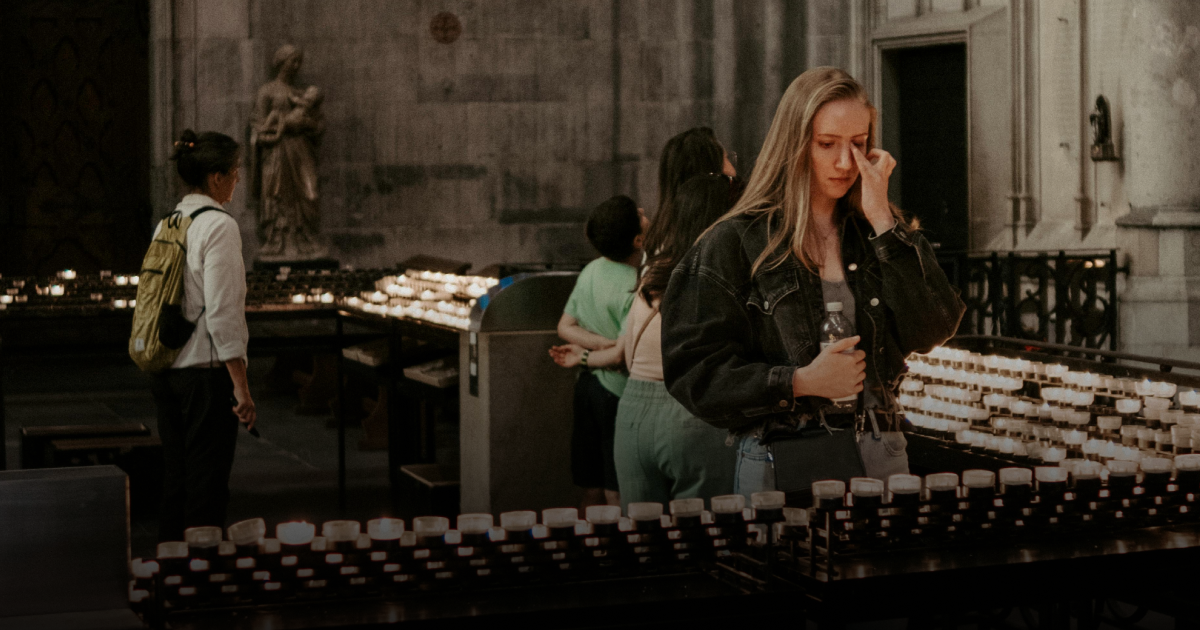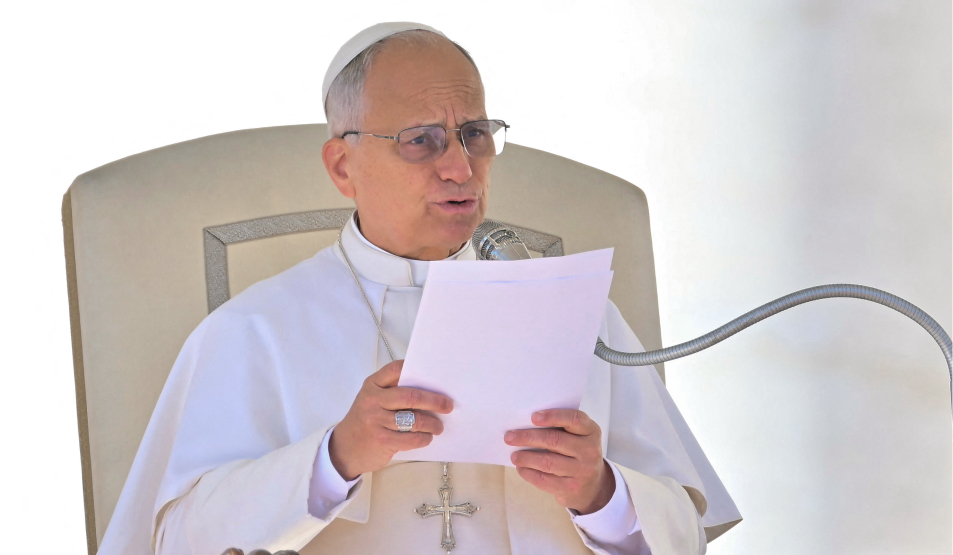“The Pilgrim Church” is one of those mysterious, allusively beautiful phrases that moves in and out of a Catholic layperson’s consciousness. But one, I must admit, that I never dwelt on until my own brief experience of pilgrimage this summer when I walked part of the Camino de Santiago.
The idea is implicit in the Old Testament typology of nomads and pastoralists, sojourners and tent-dwellers, though less goal-oriented until the New Testament. Perhaps the clearest formulation is St Augustine’s description of the Church as peregrinato, sometimes translated as “wayfarer”, “stranger” and sometimes, tellingly, “migrant”. It also informs the Spanish word for a pilgrim, peregrino, and usually along the Camino de Santiago.
Better writers that I have explored the formal theological implications of the Church as journeying through history, permanently somewhat at odds with the states and cultures that host it, which is as it should be – whether that milieu identifies as progressive, centrist or conservative shouldn’t matter, as the Church is always transiting towards a higher end.
However, a physical, personal pilgrimage may yet tell us what a pilgrim Church would look like on a more day-to-day level.
A pilgrim has a goal, even if it is far-off. Everything else becomes extraneous to that end, and towards that goal the pilgrim moves, constantly, knowingly. It is one of the surprising pleasures of a pilgrimage: that rare experience in life of radical simplification and the freedom that comes with the sloughing off of distractions.
A Pilgrim Church would likewise maintain its focus, and reassess its allegiances and movements with reference to the goal.
“There are many things in Catholicism,” as my priest once said, and one of the sometimes-valid Protestant critiques was that these things were deviations. Despite Reformation suspicion of pilgrimage, it is a reminder of what actually matters and what is mere habit, custom and going-through-the-motions.
Sometimes this might involve change, just as pilgrims must be adaptable, and are adapted – not only as changes naturally occur to them as the goal is approached, but in order to achieve the goal.
A pilgrim is hosted, not homed. One stays for one night in a hostel or albergue, then moves on. Lovely as the Galician towns are, it’s not for the pilgrim to get attached to places or things. To get comfortable and put down roots is to give up on the pilgrimage, and fail.
Early Christianity was simply known as The Way, and if pilgrimage is one of the oldest traditions, instituted in the example of Our Lord and his apostles, then a traditional Catholic should be a mendicant soul in permanent motion, and be comfortable with that.
In 2021, Pope Francis said: “... when the Church stops, she is no longer Church, but a beautiful pious association which imprisons the Holy Spirit.”
The Pilgrim Church serves as a counter-analogy to the static, self-satisfied, smug sense of a great institution or even club, the perennial challenge faced by the great reformers, from Gregory to St Francis of Assisi to Dorothy Day.
Pilgrimage is hard work, physically. One walks though all weathers, on broken roads, up and down gradients, is occasionally lost and presented with setbacks.
Pilgrims are or become wiry, tanned, muscular in the calves, slightly smelly, hair becomes longer and matted, but at the same time the pilgrim becomes more and more in what might be called rude health.
They are not passengers, but deliberate, individual corporal entities, deciding to get up and move a body yet again.
The body matters and is good: a robust and fit Pilgrim Church will be physical and IRW ("In the Real World") – not over-intellectualised, virtual or presenting itself as media-content.
It’s an axiom that on a first Camino, everyone over-packs, and soon discards the stuff they don’t need. A lighter pack means a quicker, easier pace, with less chance of injury. It’s not only spiritually but practically true that we need less than we think. St James had his staff and his gourd and not much else.
Pilgrimage is implicitly anti-capitalist: take only what you need and can carry for 25km per day. When the pilgrim comes back to the world they are more likely to see and feel the weight of the toxic burdensome garbage that clogs everyday life.
A Pilgrim Church, likewise, can and should dump unwise accretions and “essential” purchases, hoarded out of fear or anxiety or habit. Because pilgrimage is joyful.
My Camino was one of the most fun things I’ve done in years. You realise why the medievals did it so much, why Chaucer wrote about it in the way he did.
People have a good time. It should also be said: there are a number of good-looking young people on the Camino, and there is a kind of restrained but palpable sexiness to it (and what better place to meet a spouse?). A Pilgrim Church, likewise, will be a positive pleasure to be part of.
A pilgrim passes through created nature and is glad of it. One is surrounded by beauty: dawns, hills, trees, mists, all of which one encounters at a walking pace, the speed of the soul. Animals are there, too: as the adorably sweet figure of Saint Roch and his helpful dog.
The Pilgrim Church will also care for the environment that it moves through and meditates upon.
A pilgrim has encounters outside his or her own type or community. Barriers come down, allowing one to meet extraordinary people from different faiths and confessions. Groups form and a type of moving, ad-hoc village comes into existence.
I walked with Buddhists, Evangelicals, Jews, atheists – all of us headed to the same place, reifying the visual metaphor of the scallop shell symbol of the Camino, the converging lines from all over the hemisphere.
No-one gives anyone else a hard time about their faith or lack of it (or not that I ever heard). Pilgrimage is anarchic in the best sense, formally uncontrolled but self-organising; small-c catholic in its acceptance, conforming to St Augustine’s vision in The City of God:
This heavenly city, then, while it sojourns on earth, calls citizens out of all nations, and gathers together a society of pilgrims of all languages, not scrupling about diversities in the manners, laws, and institutions whereby earthly peace is secured and maintained, but recognising that, however various these are, they all tend to one and the same end of earthly peace. It therefore is so far from rescinding and abolishing these diversities, that it even preserves and adopts them, so long only as no hindrance to the worship of the one supreme and true God is thus introduced.
Finally, and especially for me, the most important parallel: it is difficult to judge others or hector them when you are walking, sweating, panting. To point out the mote in a brother’s eye you really need to be sedentary, probably in a big leather armchair with a study full of books, or standing behind a lectern, or more likely in front of a webcam set-up.
Of course pilgrims have conversations and even arguments, one or two of which were among the most rewarding of my life, but they take place side-by-side – not face-to-face, oppositionally or hierarchically.
The pilgrim often walks in silence, alone, thinking about his or her own life, not scolding others. I was pleasantly surprised by the lack of ranting loonies or self-appointed catechists on the Camino, perhaps because they do not have a captive audience.
The constantly-mobile pilgrim is also less amenable to control. The Pilgrim Church is not a finger-wagging, mansplaining Church of God-expertise.
There are differences between the pilgrim and the Pilgrim Church. One that occurred to me was found in the slight sense of sadness at the end: Santiago de Compostela was reached with an air of satisfaction but one also touched by melancholy: you can feel the pace slow, the stops becoming more frequent, and hear our companions reflecting: I wish we didn’t have to finish, and this could go on indefinitely.
The little band – your newly found mobile village – is going to disperse forever. We finish, say farewell, and sit on our various flights home, maybe planning our next. One realises that this physical journey was a living metaphor, but not the real thing.
The end of all our pilgrimages, the real Jerusalem, is the telos where our hearts find rest: in death, eternal togetherness in God, where all lines and paths inevitably culminate: the terminus devoutly to be wish’d.
We do not have to run there, but nor should we try to turn back, or delay: in this, everyone is a pilgrim within the universal Church, whether they like it or know it or not.
Photo: A pilgrim rests and looks at Santiago de Compostela Cathedral at the end of the Way of Saint James, 4 November 2010. (Photo by MIGUEL RIOPA/AFP via Getty Images.)









.jpg)






